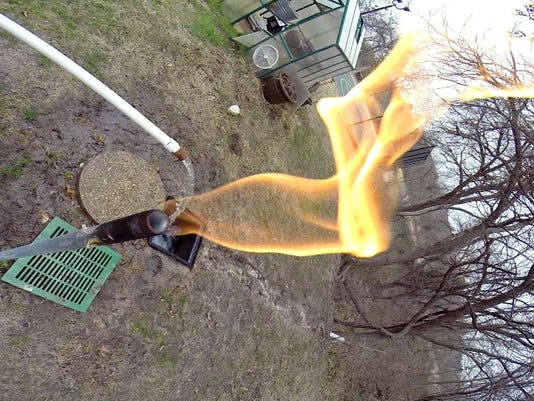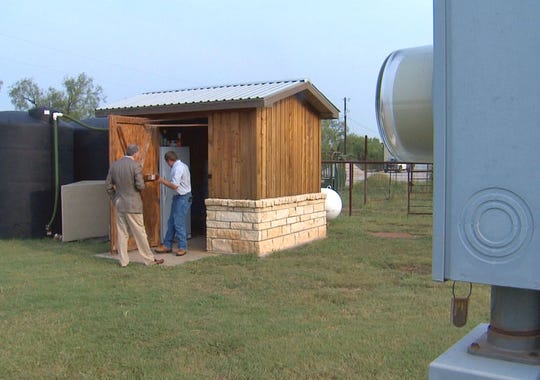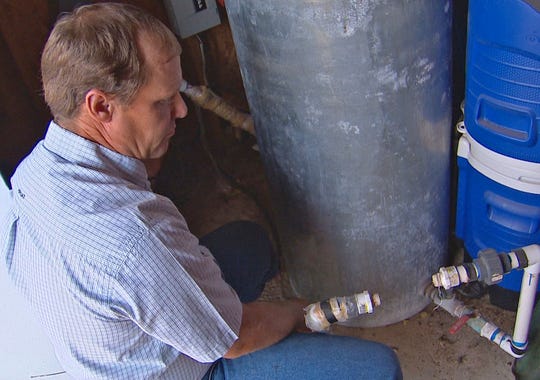Were you exposed?
For those who are concerned about potential exposure to the spill, a team of physicians and counselors is available at TU's Alexander Health Clinic. They can be reached at 918-631-2242.
Posted: Tuesday, September 1, 2015
By PAIGHTEN HARKINS World Staff Writer
Authorities are working to clean up a year-old radioactive chemical spill on the University of Tulsa’s north research campus that was just brought to university officials’ attention last week.
Tracerco, a company contracted through TU, spilled a small amount of the radioactive isotope cesium-137 in the Process Building on TU’s North Campus in the fall 2014 semester, but university officials just learned of the spill Aug. 25, university spokeswoman Mona Chamberlin said.
After university officials learned of the spill, they restricted access to the building and notified the Oklahoma Department of Environmental Quality, which has since been investigating. University officials sent a campus-wide email about the spill on Monday.
“We were really blindsided,” Chamberlin said.
Calls and emails to Tracerco representatives were not returned before press time.
At least 21 people will be evaluated for potential exposure to the chemical, said Dr. Gerard Clancy, vice president of health affairs for TU.
Those individuals will go through an initial assessment and undergo a medical examination. After that, a clinician will continue to monitor their conditions, Clancy said.
“No matter what, we’re going to follow these people carefully and make sure nothing falls through the cracks,” he said.
In this case, university officials aren’t worried about the immediate effects of radiation, such as radiation sickness and burns. Instead, they are worried about the long-term effects, which include an increased risk of cancer, Clancy said.
Individuals can be at risk depending on the amount of time exposed and proximity to the radiation.
While some risk is involved for people who worked around the spill, the risk for those who didn’t is “exceedingly low,” said Scott Holmstrom, associate professor of physics and campus radiation safety officer.
The North Campus, at 2450 E. Marshall St., east of Lewis Avenue between Independence and Pine streets, is restricted to certain people, and its individual buildings are restricted to those who work there, university officials said.
Those who were at the North Campus but weren’t working directly with the research team in the Process Building after the spill have very little risk of exposure, according to a statement from TU.
One of the issues with this spill, which was about the size of a teaspoon, is that it wasn’t reported for almost a year, meaning it has spread through the lab.
“Just imagine if one of your kids dropped jelly in the kitchen. People are going to step in it. It’s going to move it around. You mop it; you’re going to spread it around,” Holmstrom said.
While spills like this can be spread from contact with people’s clothing to areas outside of the lab, there’s no evidence that this happened with this spill, Holmstrom said.
The university is working with authorities from the Oklahoma Department of Environmental Quality and Tracerco to clean the spill, according to the statement from TU.
What is cesium?
Cesium is a commonly used radioactive isotope that emits two types of radiation: beta particles and gamma rays. These types of radiation have enough energy to damage human tissue.
Just as UV rays from the sun can damage the outside of someone’s skin, these types of radiation have enough energy to penetrate through the skin and damage the inside of a body, Holmstrom said.
TU researchers regularly use cesium to measure fluid density, which is especially useful in petroleum research, Holmstrom said. Researchers were using the cesium in multiphase flow loops, which simulate what happens when oil is pulled out of the ground, Holmstrom said. In this instance, researchers were using the cesium for a joint industry project managed by the university’s Petroleum Engineering Department.















































